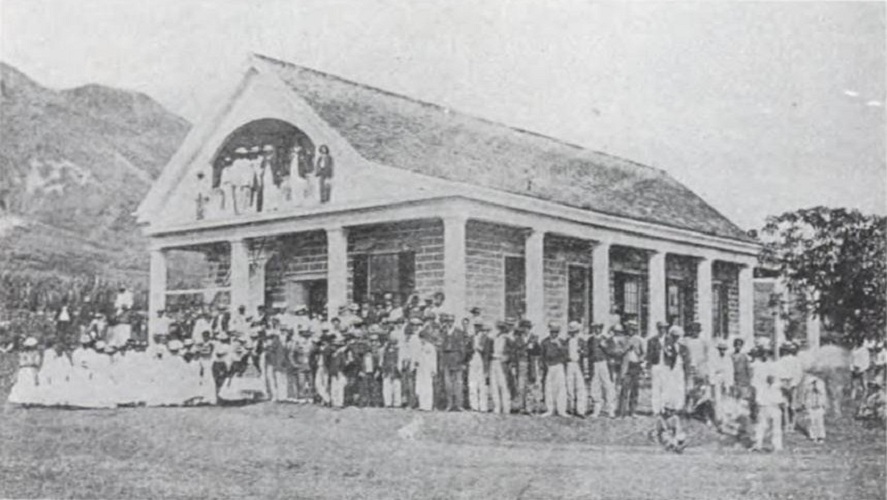“Hawaii is the home of shanghaied men and women, and of the descendants of shanghaied men and women. They never intended to be here at all.” (London)
“Come with your invitations, or letters of introduction, and you will find yourself immediately instated in the high seat of abundance.”
“Or, come uninvited, without credentials, merely stay a real, decent while, and yourself be ‘good,’ and make good the good in you- but, oh, softly, and gently, and sweetly, and manly, and womanly – and you will slowly steal into the Hawaiian heart …”
“… which is all of softness, and gentleness, and sweetness, and manliness, and womanliness, and one day, to your own vast surprise, you will find yourself seated in a high place of hospitableness than which there is none higher on this earth’s surface.”
“You will have loved your way there, and you will find it the abode of love.” (Jack London)
“I remember a dear friend who resolved to come to Hawaii and make it his home forever. He packed up his wife, all his belongings including his garden hose and rake and hoe, said ‘’Goodbye, proud California,’ and departed.”
“Now he was a poet, with an eye and soul for beauty, and it was only to be expected that he would lose his heart to Hawaii as Mark Twain and Stevenson and Stoddard had before him.”
“So he came, with his wife and garden hose and rake and hoe.”
“Heaven alone knows what preconceptions he must have entertained. But the fact remains that he found naught of beauty and charm and delight.”
“His stay in Hawaii, brief as it was, was a hideous nightmare. In no time he was back in California. To this day he speaks with plaintive bitterness of his experience”.
“Otherwise was it with Mark Twain, who wrote of Hawaii long after his visit: ‘No alien land in all the world has any deep, strong charm for me but that one; no other land could so longingly and beseechingly haunt me sleeping and waking, through half a lifetime, as that one has done.”
“Other things leave me, but it abides; other things change, but it remains the same. For me its balmy airs are always blowing, its summer seas flashing in the sun; the pulsing of its surf-beat is in my ears; I can see its garlanded crags, its leaping cascades, its plumy palms drowsing by the shore, its remote summits floating like islands above the cloudrack …”
“… I can feel the spirit of its woodland solitudes; I can hear the plash of its brooks; in my nostrils still lives the breath of flowers that perished twenty years ago.’”
“I doubt that not even the missionaries, windjamming around the Horn from New England a century ago, had the remotest thought of living out all their days in Hawaii. This is not the way of missionaries over the world.”
“They have always gone forth to far places with the resolve to devote their lives to the glory of God and the redemption of the heathen, but with the determination, at the end of it all, to return to spend their declining years in their own country.”
“But Hawaii can seduce missionaries just as readily as she can seduce sailor boys and bank cashiers, and this particular lot of missionaries was so enamored of her charms that they did not return when old age came upon them.”
“But to return. Hawaii is the home of shanghaied men and women, who were induced to remain, not by a blow with a club over the head or a doped bottle of whisky, but by love.”
“Hawaii and the Hawaiians are a land and a people loving and lovable. By their Ianguage may ye know them, and in what other land save this one is the commonest form of greeting, not ‘Good day,’ nor ‘How d’ye do,’ but ‘Love?’”
“That greeting is Aloha – love, I love you, my love to you.”
“Good day – what is it more than an impersonal remark about the weather? How do you do- it is personal in a merely casual interrogative sort of a way.”
“But Aloha! It is a positive affirmation of the warmth of one’s own heart-giving. My love to you ! I love you! Aloha!”
“Well, then, try to imagine a land that is as lovely and loving as such a people.”
“Hawaii is all of this.”
“Not strictly tropical, but sub-tropical, rather, in the heel of the Northeast Trades (which is a very wine of wind), with altitudes rising from palm-fronded coral beaches to snow-capped summits fourteen thousand feet in the air; there was never so much climate gathered together in one place on earth.”
“The custom of the dwellers is as it was of old time, only better, namely: to have a town house, a seaside house, and a mountain house. All three homes, by automobile, can be within half an hour’s run of one another …”
“… yet, in difference of climate and scenery, they are the equivalent of a house on Fifth Avenue or the Riverside Drive, of an Adirondack camp, and of a Florida winter bungalow, plus a twelve-months’ cycle of seasons crammed into each and every day.”
“Indeed, Hawaii is a loving land.”
“Hawaii has been most generous in her hospitality, most promiscuous in her loving. Her welcome has been impartial.” (This is Jack London’s view of the Islands.)































